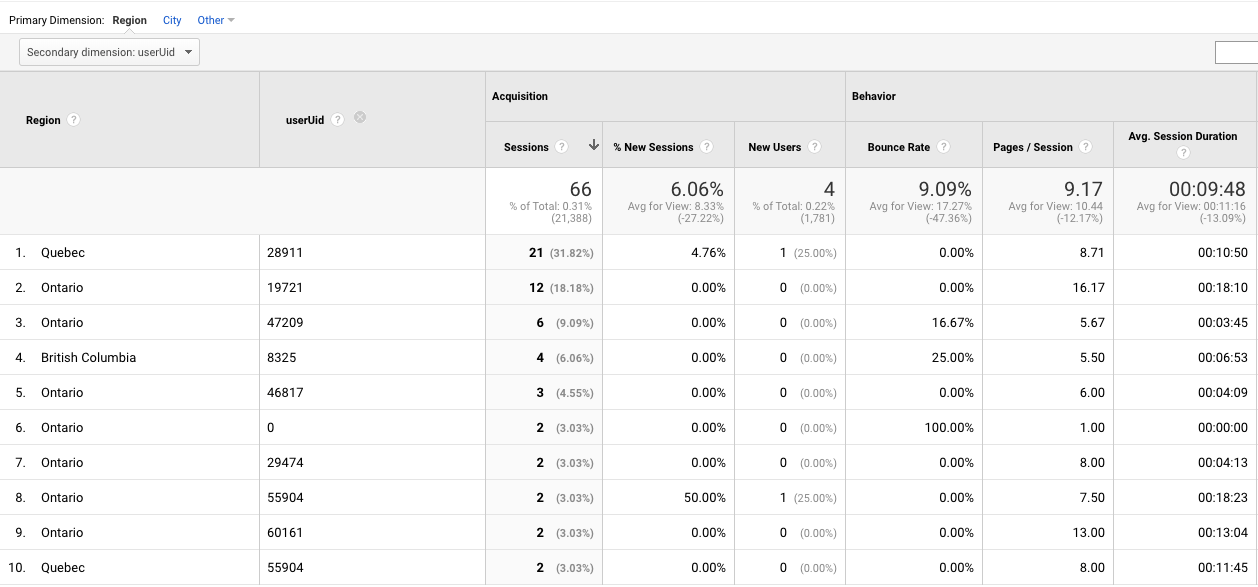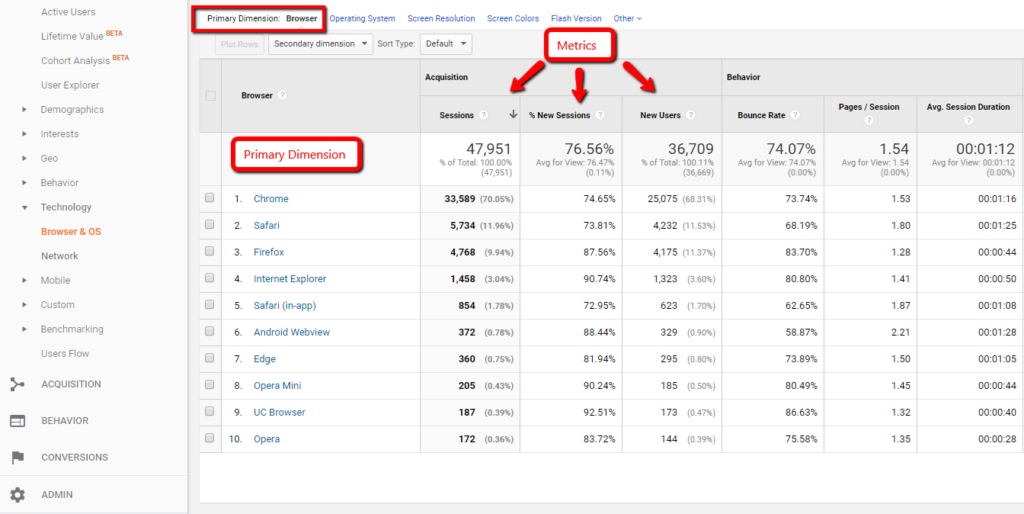The Importance of 'Secondary Dimensions' in Google Analytics: Thorough Analysis
The Importance of 'Secondary Dimensions' in Google Analytics: Thorough Analysis
Blog Article
Decoding the Importance of Additional Dimension in Google Analytics: All About Its Importance and Impact
In the realm of electronic analytics, the use of secondary measurements within Google Analytics acts as a pivotal device for critical much deeper layers of information understandings. The value of secondary dimensions hinges on their capacity to provide a nuanced sight of individual habits and interaction with a website or system. By exploring information past surface-level metrics, organizations can open a wealth of details that refines and shapes critical choices advertising efforts. This exploration right into the world of secondary measurements not just uses an extensive understanding of user engagement however also drops light on the elaborate dynamics that drive online efficiency.
Recognizing Secondary Dimensions in Google Analytics
The understanding of second dimensions in Google Analytics is important for gaining deeper understandings right into customer habits and web site performance. While primary measurements give fundamental data points such as web traffic resources and web page sights, second dimensions allow for an extra nuanced analysis by giving extra context to these main metrics. By including second measurements, customers can segment and filter their data to discover patterns and patterns that may not be instantly evident.

Unveiling the Conveniences of Second Measurements
Building upon the foundational understanding of additional measurements in Google Analytics, discovering the benefits they provide exposes indispensable insights for improving data evaluation and decision-making. By including additional dimensions, individuals can dive deeper right into their data, gaining a more extensive sight of customer actions, material efficiency, and various other crucial metrics. Among the key benefits is the ability to sector data, enabling a much more granular evaluation of various dimensions such as web traffic sources, devices, demographics, and more. This division allows customers to determine patterns, trends, and relationships that may not be noticeable when looking at information in aggregate.
In addition, second measurements provide context to main data, providing added layers of info that can aid in recognizing user interactions and choices. This boosted understanding can direct calculated decision-making, leading to more targeted marketing projects, site optimizations, and overall enhanced performance. Essentially, additional measurements work as an effective device for opening much deeper understandings and making the most of the utility of Google Analytics for companies and web site owners.
Leveraging Secondary Measurements for Enhanced Insights
By using the power of additional dimensions in Google Analytics, companies can uncover much deeper insights that drive informed tactical and decision-making Clicking Here optimization initiatives. Leveraging additional dimensions permits organizations to delve beyond surface-level information and get a more extensive understanding of customer habits, target market demographics, traffic sources, and site performance. For instance, by integrating key measurements like website traffic resources with secondary dimensions such as geographical place or tool classification, organizations can recognize which tools or regions are driving the most valuable web traffic to their site.
Furthermore, second measurements allow services to segment and examine data a lot more efficiently, aiding them determine trends, patterns, and chances that might have otherwise gone unnoticed. By using second dimensions, services can tailor their marketing methods, content, and customer experience to better fulfill the needs and preferences of their target market. Essentially, leveraging secondary dimensions in Google Analytics encourages businesses to make data-driven decisions that bring about boosted performance, enhanced ROI, and sustainable development.

Influence of Secondary Measurements on Data Analysis
Enhancing information analysis via the application of secondary dimensions in Google Analytics gives organizations with a deeper understanding of their on-line efficiency metrics. By integrating second measurements, such as time of day, geographic place, or tool classification, services can uncover beneficial understandings that might have been forgotten with main measurements alone. This enhanced level of granularity enables even more exact division of information, enabling services to recognize patterns, patterns, and connections that can drive calculated decision-making.

Maximizing Prospective: Second Dimensions Strategies
One essential strategy is to incorporate secondary dimensions with primary measurements to obtain a detailed sight of user communications. Coupling the key measurement of 'source/medium' with secondary measurements like 'touchdown web page' or 'gadget category' can disclose which channels are driving web traffic to specific web pages or exactly how customer behavior differs throughout gadgets.
Furthermore, using secondary dimensions to segment information based on user demographics, behavior, or modern technology can assist organizations tailor their advertising and marketing initiatives to particular target market segments. This targeted strategy can cause enhanced conversion rates, improved individual experiences, and inevitably, increased ROI. By maximizing the possibility of second measurements in Google Analytics, organizations can make educated choices, optimize their online visibility, and drive sustainable growth.
Final Thought
In final thought, second measurements in Google Analytics play an essential role in supplying deeper insights and boosting data evaluation. Incorporating additional measurements into information analysis strategies can lead to even more informed decision-making and improved overall performance.
While key measurements offer basic information points such as website traffic resources and page sights, secondary measurements permit for an extra nuanced evaluation by giving extra context to these main metrics. By integrating key dimensions like web traffic resources with second measurements such as geographic place or device group, companies can recognize which devices or areas are driving the most beneficial website traffic to their great site web site.
By incorporating second measurements, such as time of day, geographical area, or gadget group, services can discover useful insights that might have been overlooked with key measurements alone. One crucial approach is to incorporate second measurements with main dimensions to get a detailed view of customer communications. Coupling the primary measurement of 'source/medium' with secondary measurements like 'landing page' or 'gadget classification' can reveal which channels are driving web traffic to specific pages or how user behavior varies across devices.
Report this page